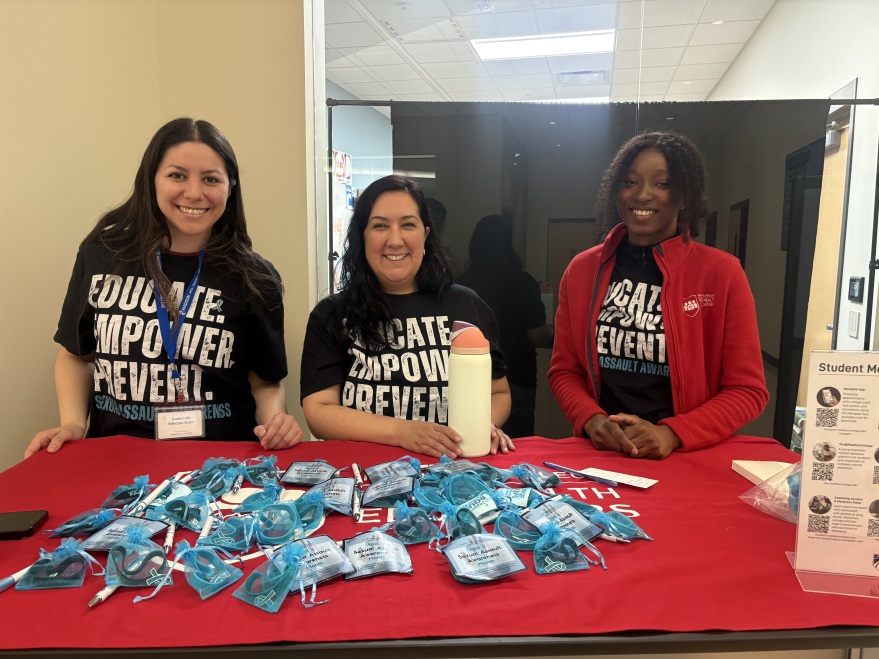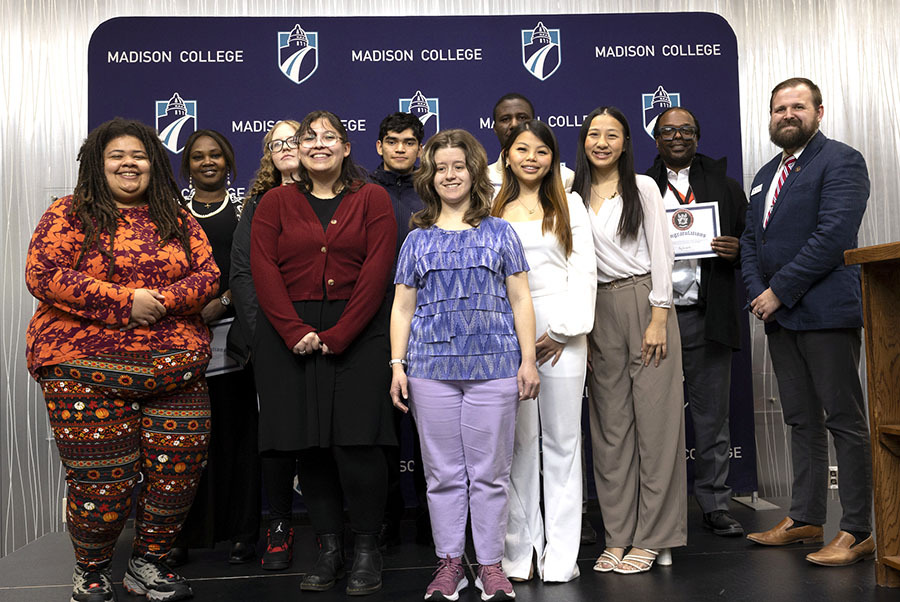My take on the controversy over CRT
November 23, 2022
Critical race theory, commonly known as CRT, has become a controversial topic over the last couple of years. From widespread reports of CRT-induced indoctrination of grade-school students to parents, both white and Black, decrying it at school board meetings, CRT stands out as the newest excuse for people to divide across political and ideological lines (as if they did not have enough reason to do that already).
But amidst the raging debate, one thing is clear: many people on both sides of the political aisle do not have an adequate understanding of what critical race theory is. Conservatives label it as racist, divisive rhetoric that separates people into two broad categories (victim and oppressor) simply based on the color of their skin. Liberals and progressives, particularly the latter, regard it as an opportunity to give an honest account of American history, especially the history of racism in our country. While there are elements of veracity in both views, political polarization has led many to take a tiny shred of truth and run off with it. In this article, I define what critical race theory is and give reasons why it might not be the most suitable for public education.
What is critical race theory, anyway?
Critical race theory (or CRT, for short) contends that America’s legal system is racist and that it has enforced “race-based power structures” since the day the Founding Fathers declared America an independent nation. Critical race theory seeks to understand how the American legal system has been used by the dominant culture to suppress and subjugate minorities, according to Alexandra Smith’s article “Why Critical Race Theory Is Essential to an Honest Education in America,” published on Sept. 2, 2021, in the Human Rights Pulse Magazine. Stephen Sawchuck, in his article “What is Critical Race Theory, and Why is it Under Attack?” published May 18, 2021, in Education Week, informs us that, according to critical race theory, race is socially constructed and racism is “embedded in legal systems and policies.” This is the pure, original form of critical race theory: analyzing racism and oppression in the United States’ legal system. Most reasonable people would support this, as a growing number of Americans wish to reckon with their nation’s racial past. It is important to change the dominant white male narrative to give an honest account of America’s raw and sometimes shameful past.
Why is critical race theory so controversial?
Why then, is critical race theory so controversial? Why have dozens of states introduced legislature to outlaw race essentialism in their schools? To many on the Left, the answer is simple: it’s just a bunch of fragile white Republicans who don’t want to tell the truth about race! I’m sorry to say it, but the reality is much more complicated than that. The version of colorism I described above – a legal theory that itself is founded on progressive ideology – is all but extinct, confined to the halls of law school (if it even exists there at all).
Kimberle Crenshaw, a leading critical race theory scholar, herself admits that critical race theory is not etched in stone. It is changing and evolving. As a result, sociologists and activists have added many different things to critical race theory, among them the belief that the framers founded America on racism, creating an inherently, irredeemably racist country, the idea that all white people are oppressors and individually racist and the notion that Americans must tear down their own country to build a progressive and more equitable utopia. And it is these newer aspects that have triggered the controversy.
What’s wrong with critical race theory in schools?
Various problems exist with introducing hegemony into primary education. (For the purposes of this article, I will focus on primary, or K-12, education). First, critical race theory is not history, yet it has dramatically influenced the teaching of American history. Proponents of critical race theory often claim it gives an accurate picture of American racism in this country. This is false. One cannot honestly regard critical race theory as the history of racism because, as Walter Myers III points out in his article “Critical Race Theory: Intriguing, but Wrong for K-12 Education,” published Jan. 19 in Discovery Institute, critical race theory is not history. It’s a legal theory that analyzes how legal structures have affected the Black experience. Therefore, colorism is unsuitable for public education.
Secondly, critical race theory is not as innocent as some believe. Some wish to separate critical race theory from ethnic studies and anti-racist teaching in school. They claim that the two differ greatly from one another, contending that those who wish to ban critical race theory lump these various aspects together and do not fully understand what they are banning. According to them, critical race theory is a legal theory only taught in law schools, and bans on critical race theory represent misled attacks on equity education and efforts to discuss racism honestly in schools. Incorrect. As Kali Fontanilla, a former K-12 educator, discovered during her time as a teacher, critical race theory has made its way into many high school classrooms. Fontanilla discovered that an ethnic studies course many of her students were forced to take specifically mentioned critical race theory by name. Curriculum also included forcing students to learn the four I’s of oppression – a critical component of critical ethnic studies – and telling them to analyze their own school through the lenses of critical race theory, according to an article titled “Teacher Blows the Whistle on Critical Race Theory in California Schools” published by the Goldwater Institute on Jan. 31.
Not enough evidence for you? There are widespread reports of hegemony penetrating American public schools, including the 1619 Project, which the Biden Administration recently approved for K-12 education, affinity groups in schools which segregate based on race and other examples. Disguised as seemingly harmless ethnic studies classes and “culturally relevant instruction,” critical race theory is shaping student perceptions of America and instructional curricula to reflect a radical-left worldview. Given how controversial this is and how questionable some critical race theory tenets are, shouldn’t we at least investigate claims of its presence in schools, especially with so much evidence indicating their veracity? Will dismissing critics of critical race theory as racist fragile white men who do not want to talk about race help America reach a good compromise on this divisive issue?
Thirdly, critical race theory classifies people into two broad categories based on the color of their skin. White people are the oppressors, those who knowingly or unknowingly suppress the cultures and beliefs of others and force them to submit to the dominant version of history. Black people and other minorities are the oppressed, victims of an irredeemably prejudiced system designed to ensure they can never succeed. Now, many proponents of critical race theory claim it does not seek to punish white people. I ask, what then do you make of widespread reports of woke educators teaching students whiteness is property and how to be less white? The original critical race theory may not have (explicitly) articulated anti-white sentiment, but progressive historians, sociologists and educators have plugged it into critical race theory. The truth is critical race theory is a Marxist ideology that wants to undermine American values. That might sound harsh; it may even sound like a conservative talking point. But it is the truth. Granted, many people in this country, especially leftists, harbor a deep resentment for America and view the country as an enduring emblem of racism and injustice. That is their opinion, their worldview. They cannot be allowed to poison the minds of impressionable young primary school students with this ideology.
Caveat: traditional history is no better.
Now, before you brand me as an American nationalist, let me give some important caveats. There are many elements of truth in the pro-CRT view. One is the fact that over the years, America taught history from a whitewashed, Eurocentric perspective. Racist white historians portrayed Native Americans as savage folk who white people needed to civilize and introduce to the civilized society, Black people as descendants of a cursed son of Noah who deserved slavery because that is all they were good for and Latinos as cruel barbarians who attacked American soil in the battle of the Alamo. They failed to mention that Native Americans lived in advanced societies long before the colonizers arrived in the New World and that African civilization was centuries ahead of Europe in terms of technological advancement.
This incomplete narrative underpins traditional history, highlighting the potential dangers in returning to a conventional historical narrative (the solution many conservatives propose). That is one extreme: viewing America as a wonderful country while underemphasizing its faults. However, critical race theory offers little improvement, as it seeks to smear America based on its wrongdoing and downplay its accomplishments.
At times, critical race theorists even suggest that noble accomplishments such as the Civil Rights Act were, in reality, designed to help the dominant white class. Nonsense. While some inequities persisted after the Civil Rights Movement, activism and increased awareness of these inequities led to more pro-minority legislation in recent years. The mere existence of certain inequities does not give sufficient reason to view America as an evil country. Suggesting that America has made little to no progress in terms of racial equality and reconciliation equates to outright dishonesty in how we tell history. That is the other extreme.
Acknowledging past triumphs as well as mistakes is a necessary first step to achieving racial equality and harmony. Both critical race theory and the conventional narrative fail to accomplish this feat. They are incomplete, distorted narratives formulated to indoctrinate young people, making them see America solely through a certain lens – a lens they will likely carry for the rest of their lives. Americans should reject this assault on the young.
Instead, we should focus on presenting a balanced, centrist narrative of history. Forget twisting history altogether; let us follow the advice Jonathan Zimmerman presents in his op-ed “Telling the Truth About CRT” published Nov. 9, 2021, in The Hill: present the truth – the entire truth – to primary school students and let them decide how to view America.
Conclusion.
I hope that after reading this article, you at least understand the argument against allowing critical race theory in K-12 schools. Critical race theory seeks to extend the Marxist view of life as a struggle between the haves and the have-nots to race and gender. It has changed over the years, as progressive historians, curriculum writers and sociologists added in beliefs and values that drove it all further and further left. CRT is false history. It divides people into racial and economic castes, and it fails to paint an accurate depiction of America’s racial past and present.
America needs to own up to its racial past, but critical race theory and all CRT-influenced education is not the way to go. We need balance. We seriously need balance. Both sides of the political spectrum seem to have forgotten this. Educators must let the students decide how they want to view America and leave the opinion-making to them. They shouldn’t tailor the curriculum to shove their worldview down their throats. That is wrong, it is immoral and it is manipulative.































